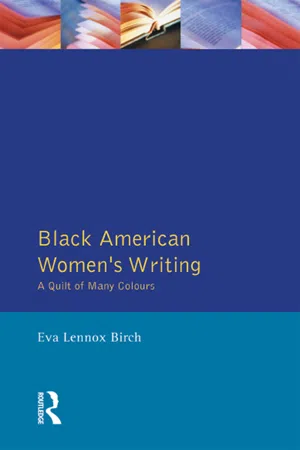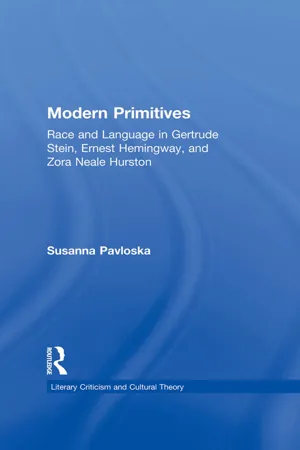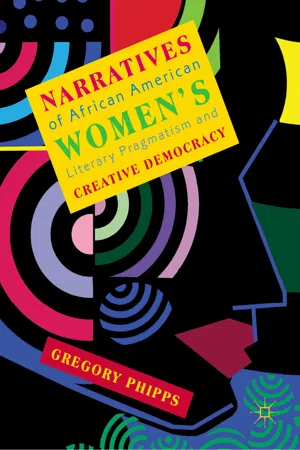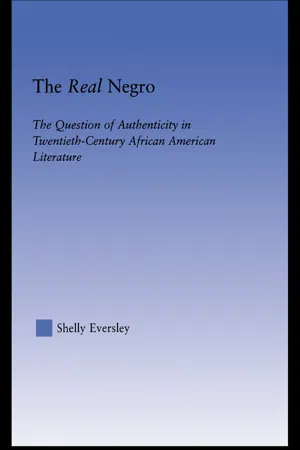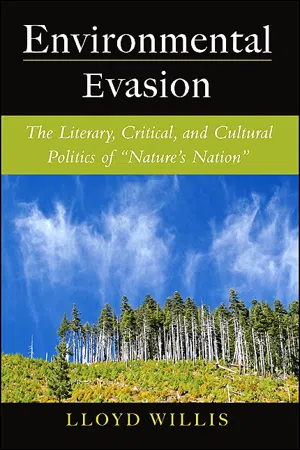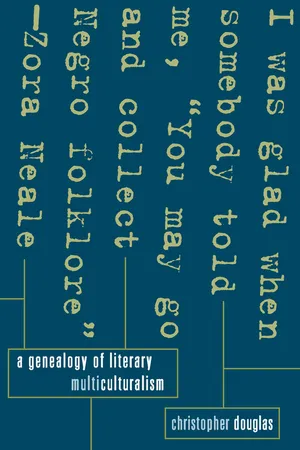History
Zora Neale Hurston
Zora Neale Hurston was an influential African American author, anthropologist, and filmmaker during the Harlem Renaissance. She is best known for her novel "Their Eyes Were Watching God," which explores the experiences of African American women in the early 20th century. Hurston's work focused on the culture and traditions of the American South, and she played a significant role in preserving and celebrating African American folklore and storytelling.
Written by Perlego with AI-assistance
Related key terms
Related key terms
1 of 4
Related key terms
1 of 3
10 Key excerpts on "Zora Neale Hurston"
- eBook - ePub
- Eva Lennox Birch(Author)
- 2016(Publication Date)
- Routledge(Publisher)
Until she embarked on a university course in black literature, where she found Hurston’s name appended like a ‘verbal footnote’ to the ‘illustrious all-male list’ that constituted the body of the syllabus, Walker had been unaware of Hurston’s work. The question immediately raised by Walker’s memory of this is what had happened to allow Hurston to all but disappear from the conscious awareness of her own people? Could it be possible that she was in fact a minor talent undeserving of critical attention? Had her writing possessed significance only for her contemporaries? Yet Walker’s own importance within the black female literary tradition demands a respect that makes us hesitate to reject the praise she affords Hurston as a writer, as does the epitaph Walker composed for inscription on the headstone she erected in her memory. It reads:Zora Neale Hurston ‘A Genius of the South’ Novelist Folklorist Anthropologist 1901 1960The reasons for previous critical neglect of Hurston can be found in the underrepresentation of women in general and the marginalisation of black writers in particular, within the American literary canon. Her determined retrieval of the lore and language of her people, whose cultural contribution had gone largely ignored by dominant white society, and her use of black dialect and mythology in her creative writing, offered a direct challenge to that canon. In Shadow and Act,3the protest novelist Ralph Ellison suggests that folklore is valuable both as a mediating agent between the folk and the harsh reality of their experience, and as a basis for creative writing. Hurston’s anthropological fieldwork had brought her to the same conclusion and had made her examine how best she could fulfil her aspirations as both scholar and artist. Had she never trained as an anthropologist, the folk material known to her from the ‘earliest rocking’ of her cradle would still have been accessible to her. Inevitably some commentators, who perceived a conflict between academic study and artistic retrieval of that material, criticised her dual approach. On both counts Hurston encountered partisan criticism. In particular, she was accused of exploiting folklore to further her career as a writer. However, Hemenway in his insightful and sympathetic literary biography of Hurston,4 - eBook - ePub
I Love Myself When I Am Laughing... And Then Again When I Am Looking Mean and Impressive
A Zora Neale Hurston Reader
- Zora Neale Hurston, Alice Walker(Authors)
- 2020(Publication Date)
- The Feminist Press at CUNY(Publisher)
In all of the various personality sketches, full-length literary studies, forewords, and afterwords inspired by Hurston, there is a broad range of contradictory reactions. There were those who saw her as a highly reserved and serious writer, so private that few people ever knew her correct age or that she had been married several times; she was also described as loud and coarse, playing the happy darky role to entertain whites. Some critics put her writing in the same category as minstrel shows; others praised her as the most significant “unread” author in America. One critic wrote that her work reveals an unconscious desire to be white. But a student who heard Hurston speak at Bennett College in 1941 said that what the students were most impressed with was this woman’s deep sense of racial pride.Certainly nothing ever written about her or her work is lukewarm. Partly, this is attributable to her own unique personality. From the anecdotes and apocryphal tales told about Hurston, one must conclude that she was nothing if not controversial, highly outspoken, arrogant, independent, and eccentric. She was also a black woman determined, in the period between 1920 and 1950, to have a career as a writer, which in itself was eccentric. Though she lived in controversy, died penniless, and was out of print for thirty years, Zora Neale Hurston did indeed establish herself as a writer and folklorist. In her thirty-year career, she published four novels, two books of folklore, an autobiography, numerous stories, articles, and plays.To a large extent, the attention focused on Zora Hurston’s controversial personality and lifestyle has inhibited any objective critical analysis of her work. Few male critics have been able to resist sly innuendoes and outright attacks on Hurston’s personal life, even when the work in question was not affected by her disposition or her private affairs. But these controversies have loomed so large in the reviews of her work that once again the task of confronting them must precede any reappraisal or reevaluation of her highly neglected work. Jumping up and down in the same foot-tracks, as Zora would call it. - eBook - ePub
Modern Primitives
Race and Language in Gertrude Stein, Ernest Hemingway, and Zora Neale Hurston
- Susanna Pavloska(Author)
- 2014(Publication Date)
- Routledge(Publisher)
God's Trombones [1927], noted with satisfaction that “practically no poetry is being written in dialect by the colored poets of today” (qtd. in North 10). Locke, however, apparently believed that the time had come when African-American writers could once again return to the folk as both material and means of expression:The elder generation of Negro writers expressed itself in…guarded idealization…“Be representative”: put the better foot foremost, was the underlying mood. But writers like … Zora Hurston…take their material objectively with detached artistic vision; they have no thought of their racy folk types as typical of anything but themselves or of their being taken or mistaken as racially representative. (50)By all rights, Zora Neale Hurston was uniquely qualified to realize this project. Virtually uniquely among the other prominent members of the “talented tenth,” Hurston was a member of “the folk”: born and raised in the all-black town of Eatonville, Florida, she boasted that she had “a map of Dixie on my tongue” (Dust Tracks 135). Furthermore, she had a degree in anthropology from Columbia University, where she was the student of Franz Boas, the preeminent figure in American anthropology of that time. Her stories, such as “The Eatonville Anthology” [1926], the novels Jonah's Gourd Vine [1934] and Their Eyes Were Watching God [1937] and her ethnographical work, Mules and Men [1935], made her the first African American to bring African-American folklore to a wide audience.In the latter half of the twentieth century, Hurston's ethnography has come to be seen as an early example of the politics of black pride. One of the fundamental principles of Robert Hemenway's influential biography is the belief that Hurston's ethnographical writings were carried out with the aim of giving African Americans, in Hurston's words, “something … that is our own” (qtd. in Hemenway 207). Alice Walker describes Mules and Men as a “paradise regained,” and a source of “racial health” with the capacity to restore a “southern cultural inheritance” to people displaced to the “suburbs and ghettos of Boston and New York.”5 - Gregory Phipps(Author)
- 2018(Publication Date)
- Palgrave Macmillan(Publisher)
Sweat” (1926). Her studies in anthropology took her back to Florida in 1927, effectively ending her involvement in the Harlem Renaissance.Nevertheless, in retrospect, Hurston personally exemplified and enlivened many aspects of the relationship between the Harlem Renaissance and creative democracy. Adventurous and independent, she moved among different communities, seeking individual experience and relationships founded on shared endeavours of art, literature, labour, and storytelling. At the centre of her life pulsed the desire to both participate in these relationships and transform them into literature and research. The brevity of her residence in Harlem was less a sign of her inability to engage with the New Negro Movement than a telling example of her mobility, experimentation with varied discourses, and refusal to allow one social milieu to contain her. Also, even though her initial foray into fiction writing was episodic, she established the foundations of her literary voice during her time in Harlem. As Henry Louis Gates, Jr. and Sieglinde Lemke assert in their Introduction to Hurston’s Complete Stories , “As early as 1931, Zora Neale Hurston’s capacities as a master of the short story were widely acknowledged” (x). In particular, she sharpened her talent for expressing the vernacular and rhythms of a given context, exploring the cultural environments of (and cross-currents between) Eatonville and New York City .1Hurston carved out a space for subjects and backdrops that Fauset and Larsen tended to avoid or depreciate, such as folkloric traditions, life in the rural South, and homogenous African American communities. In fact, her protagonists often seem in danger of becoming ensnared in an intersectional web not unlike the one Helga Crane discovers at the endof Quicksand. Hurston’s protagonists do not try to escape such a fate by passing or seeking out bourgeois environments. Rather, they marshal their independence, creativity, and personal convictions to intensify the joy and eliminate the pain that they find in their surroundings. Still, mobility among communities proves to be as important for Hurston’s characters as it is for Helga Crane or Angela Murray. The main difference is that, instead of continuously reinventing themselves in relation to race, class, gender, and sexuality, Hurston’s characters seek new ways to externalize the beliefs that bring vital meaning to their identities as black, sexually expressive women living in the rural South- eBook - ePub
Women’s Media History Now!
Women and Documentary Film
- Shilyh Warren(Author)
- 2019(Publication Date)
- University of Illinois Press(Publisher)
Novelist Folklorist Anthropologist .” For film and feminist scholars today, Hurston’s legacy anticipates the modes of politicized ethnographic filmmaking that emerged in the 1970s when new generations of people of color once again took up filmmaking as a form of communal self-inscription and resistance.Gloria Gibson has appointed Zora Neale Hurston the cinematic foremother of black women’s filmmaking.42 In her films, Hurston remarkably turned her camera on her own people, a move Madeline Anderson would echo in the late 1960s for her film about black women hospital workers on strike, I Am Somebody (1969), and Fronza Woods would echo a decade later in Fannie’s Film (1979). Black women’s documentary filmmaking is so scant before the late 1970s that only Hurston and Anderson have been identified as precursors to later innovators like Carroll Parrott Blue and Michelle Parkerson. As a pioneer of black women’s documentary filmmaking, Gibson writes, Hurston helped establish the dominant trend in which “black women have historically used the camera to document their lives and communities.”43 In biographical films and documentaries especially, Jacqueline Bobo points out, black women filmmakers tend to emphasize the “congruence” between themselves and their subjects.44 In chapter 4 , I examine Anderson’s I Am Somebody. I focus on the ways Anderson balances a gendered perspective on union activism with a commitment to the universalizing politics of the civil rights movement. In both Hurston’s and Anderson’s films we see this twin commitment to the specifics of gender and the collective experience of racial and economic oppression.45 - eBook - ePub
In Search of Us
Adventures in Anthropology
- Lucy Moore(Author)
- 2022(Publication Date)
- Atlantic Books(Publisher)
‘When I set my hat at a certain angle and saunter down 7th Avenue [Harlem’s main drag] … the cosmic Zora emerges,’ she wrote. Persuading people to let her measure them would be easy. ‘How can any deny themselves the pleasure of my company? It’s beyond me.’ She had arrived in New York that January with $1.50 in her pocket and a blazing desire ‘to get All ’ from life. At thirty-four years old – though she claimed to be twenty-four – she had come a long way from Notasulga, Alabama. Hurston’s childhood had been mostly spent in Eatonville, Florida, America’s first incorporated black town, where her father had been pastor in one of the Baptist churches and mayor. Hurston was thirteen when her mother died. Her father and stepmother sent her to a segregated boarding school in Jacksonville, where she discovered she was black: her first day there was ‘the very day that I became colored’. In 1917, aged twenty-six, she reinvented herself as a sixteen-year-old to qualify for the free high school education offered by the all-black Morgan College in Baltimore, Maryland, before moving to Washington, DC, where she attended another all-black college, Howard University, co-founding the student newspaper there. She dreamed of being a writer and the short story she wrote in 1921, during her time at Howard, ‘John Redding Goes to Sea’, brought her membership of Alain Locke’s literary club, the Stylus. It was probably this introduction, through Locke, the first African American Rhodes scholar and a writer and philosopher, to what would become known as the Harlem Renaissance, that inspired Hurston to move to New York - eBook - ePub
The Real Negro
The Question of Authenticity in Twentieth-Century African American Literature
- Shelly Eversley(Author)
- 2004(Publication Date)
- Routledge(Publisher)
Chapter Two Racial HieroglyphicsZora Neale Hurston and the Rise of the New NegroFOR Zora Neale Hurston, THE DIFFERENCE BETWEEN BLACKS AND whites is vivid. In her view, the color-line policed by the Jim Crow of law and literature only gratuitously reproduces a standard she believes is already there. “Everything is illustrated,” she writes, noting the crucially defining factors of two races. “[T]he white man thinks in a written language and the Negro thinks in hieroglyphics.”1 Thus, the evidence is on the wall; not only is “Negro” expression visibly distinguishable from “white” expression, the thought processes of the two races demonstrate that difference. And, as the New Negro movement of the 1920s and 1930s gains momentum, Hurston’s answer to the question of what it means to be black reinforces earlier assertions that the most salient aspects of racial difference can be seen. Her position develops the notion of a racial behavior that simultaneously reinforces the demand for the literal and the literary space of the authentic, and it contributes to the larger project of literary modernism. It was Hurston who had written to Langston Hughes, “Did I tell you about the new, real Negro theater I plan? Well, I shall, or rather we shall act out the folk tales, however short, with the abrupt angularity and naiveté of the primitive ‘bama Nigger,” and she articulated their shared commitment to dialect and cultural behavior as the source of a distinctly black art.2 Like Negro hieroglyphics, their “real” Negro theater would illustrate the features of a discrete blackness produced as a function of culture.As Hurston describes it, “black” words demonstrate “black” behavior. “His very words are action words. His interpretation of the English language is in terms of pictures.” Here, “Negro” words offer more than realism’s engagement with representation; they show, literally, what they mean. Because “action came before speech,” the “primitive” language of the Negro depends on metaphor and simile and it consequently allows an immediate relationship between the word and its meaning. Words, however, do not merely represent meaning, they become them.3 According to Hurston, Negroes have redeveloped the “detached words” associated with “white” standard English and supplemented them with action. The result: “chop-axe,” “sitting-chair,” and “cook-pot.” She explains, they are the pictures that perform meaning, “[e]verything is acted out. Unconsciously for the most part of course.” As drama, Negro expression brings to life what William Dean Howells had called “the precious difference between the races,”4 - eBook - ePub
Environmental Evasion
The Literary, Critical, and Cultural Politics of "Nature's Nation"
- Lloyd Willis(Author)
- 2012(Publication Date)
- SUNY Press(Publisher)
Hurston had arrived in Harlem in 1925 and experienced a short period of incredible success—her short stories were published in Charles S. Johnson's Opportunity and won prizes in the magazine's literary contest, she founded and co-edited Fire!! with Langston Hughes and Wallace Thurman, and she fashioned herself, for a short while, into the central spectacle of the Harlem Renaissance. 2 As time passed, though, she found herself caught between a manipulative white community that supported her financially and a group of powerful African American leaders that conspired to control her. Hurston's ultimate response to this situation—which has been criticized since the early twentieth century as an escape into nostalgia and an abandonment of liberatory racial politics—was to create an alternate zone of black autonomy in the South, the very region that many African Americans had fled during the Great Migration. For Hurston, the South—and Florida in particular—was a space that could accommodate a vibrant black community outside of Harlem's system of patronage and control. Although she had lived through some of the South's most frightening racial violence, Hurston still believed the place to be a haven for African Americans in general and African American artists in particular, and her writings work to reclaim the hostile space for the use of African Americans. The white tradition of environmental thinking, which I have discussed throughout this book, is preoccupied with environmental purity, the perpetual availability of environmental resources, and fears of environmental destruction; it treats nature as a pure Other—as something that should be revered and protected but is still Other. But Hurston's approach is fundamentally different - eBook - ePub
- Christopher Douglas(Author)
- 2011(Publication Date)
- Cornell University Press(Publisher)
But while Hurston is the most important predecessor of our current literary multiculturalism in her embrace of Boas’s turn from race to culture and in culture’s qualities of relativism, holism, and particularism, her work generally eschews the notion of identity. My argument here runs counter to Hazel Carby’s reading of Hurston’s anthropology, in which, according to Carby, “The folk as community remain the ‘other,’ and exist principally as an aesthetic device, a means for creating an essential concept of blackness” (“Politics” 40). Citing George Marcus and Michael Fischer’s critique that 1920s and 1930s ethnographic texts shared with explorer accounts the romantic discovery of unknown people, Carby sees a certain nostalgia and colonialism at work in Hurston’s anthropological attitude in Mules, Horse, and Eyes. Situating Hurston criticism of the 1990s in terms of racial and economic relations that were not getting talked about, she wonders if “Their Eyes Were Watching God [has] become the most frequently taught black novel because it acts as a mode of assurance that, really, the black folk are happy and healthy?” (41). For Carby, the fascination with Hurston depended on her anthropological romanticiziation of a rural folk community anchored in the past and in the Caribbean; like many in her 1990s audience, Hurston “displaces” urban “crisis” conditions (chronicled by Richard Wright) with an idealized rural nostalgia. But Carby sees Hurston as only a consumer, not a critic, of anthropological ideas. Carby, for instance, reads the initial salvage frame of Mules unironically (33), whereas Marc Manganaro has more compellingly shown that when Hurston’s informant appears to question the narrator’s interest in recording stories, she is using him to interrogate the entire ethnographic premise of disappearing cultures (Culture 177) - eBook - ePub
Composing Selves
Southern Women and Autobiography
- Peggy Whitman Prenshaw(Author)
- 2011(Publication Date)
- LSU Press(Publisher)
Dust Tracks so “that you may know about the time and place where I came from, in order that you may interpret the incidents and directions of my life” (1). The childhood and adulthood that she composes in this text, however, is of a person who constantly makes herself “a crow in a pigeon’s nest” (25). Like Ellen Glasgow, she writes of her early sense of herself as someone very different from others, one who has known a “cosmic loneliness” (43).In recounting her life story, Hurston follows a traditional chronological sequence, at least through chapter eleven, “Books and Things.” The later topical chapters are devoted to her views on race, friendship, romance, and religion. Like many other life narratives—Kearney’s Slaveholder’s Daughter and Lumpkin’s Making of a Southerner come immediately to mind—the book’s account of childhood focuses on parents and several incidents meant to capture and express the essential traits of the narrator’s temperament and personality as these would develop over subsequent years. Hurston is her “mother’s child,” encouraged by her from an early age to “jump at de sun,” to be a confident, ambitious, independent person—unlike the mother, who was “ninety pounds of fortitude” but died an early death and would need Zora’s voice to speak for her. There are two fathers in Hurston’s narrative of childhood, one a surrogate who came to her mother’s aid at the time of the birth, a “white man of many acres and things” (20).1 His mentoring advice to her as she grew up, underscoring her mother’s mantra, was not to lie, not to be a “nigger,” not ever to fear saying the truth.Hurston’s biological father is depicted as a man of prominence in the community and a gifted speaker, but his words to her typically were to castigate her impudence, her sassy tongue, her stiff neck. He insists she should stay in her place. Soon after her mother’s death, he marries a woman Hurston portrays as an evil stepmother, and later he refuses to pay for school board and tuition. However much Hurston seeks revenge for wrongs done her in the portrait she draws of him in Dust Tracks
Index pages curate the most relevant extracts from our library of academic textbooks. They’ve been created using an in-house natural language model (NLM), each adding context and meaning to key research topics.
Explore more topic indexes
Explore more topic indexes
1 of 6
Explore more topic indexes
1 of 4
